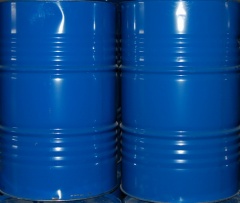Vinylacetate Monomer (VAM)
| Infobox on Vinylacetate Monomer (VAM) | |
|---|---|
| Example of Vinylacetate Monomer (VAM) |  |
| Facts | |
| Origin | - |
| Stowage factor (in m3/t) | - |
| Humidity / moisture | - |
| Ventilation | - |
| Risk factors | See text |
Vinylacetate Monomer (VAM)
Description / Application
Vinyl acetate is an organic compound; a colourless liquid with a pungent odour, it is the precursor to polyvinyl acetate, an important polymer in industry. It can be polymerized, either by itself to make polyvinyl acetate or with other monomers to prepare copolymers such as ethylene-vinyl acetate (EVA), vinyl acetate-acrylic acid (VA/AA) and polyvinyl chloride acetate (PVCA). Due to the instability of the radical, attempts to control the polymerization via most 'living/controlled' radical processes have proved problematic. However, RAFT (or more specifically MADIX) polymerization offers a convenient method of controlling the synthesis of PVA by the addition of a xanthate chain transfer agent.
Use; Polyvinyl acetate, polyvinyl alcohol, polyvinyl butyral, and polyvinyl chloride-acetate resins, used particularly in latex paints, paper coating, adhesives, textile finishing, safety glass inter-layers.
Shipment / Storage
Some properties
Melting point -93°C.
Boiling point 72.7°C.
Flash point -8°C.
Autoignition temperature 427°C.











